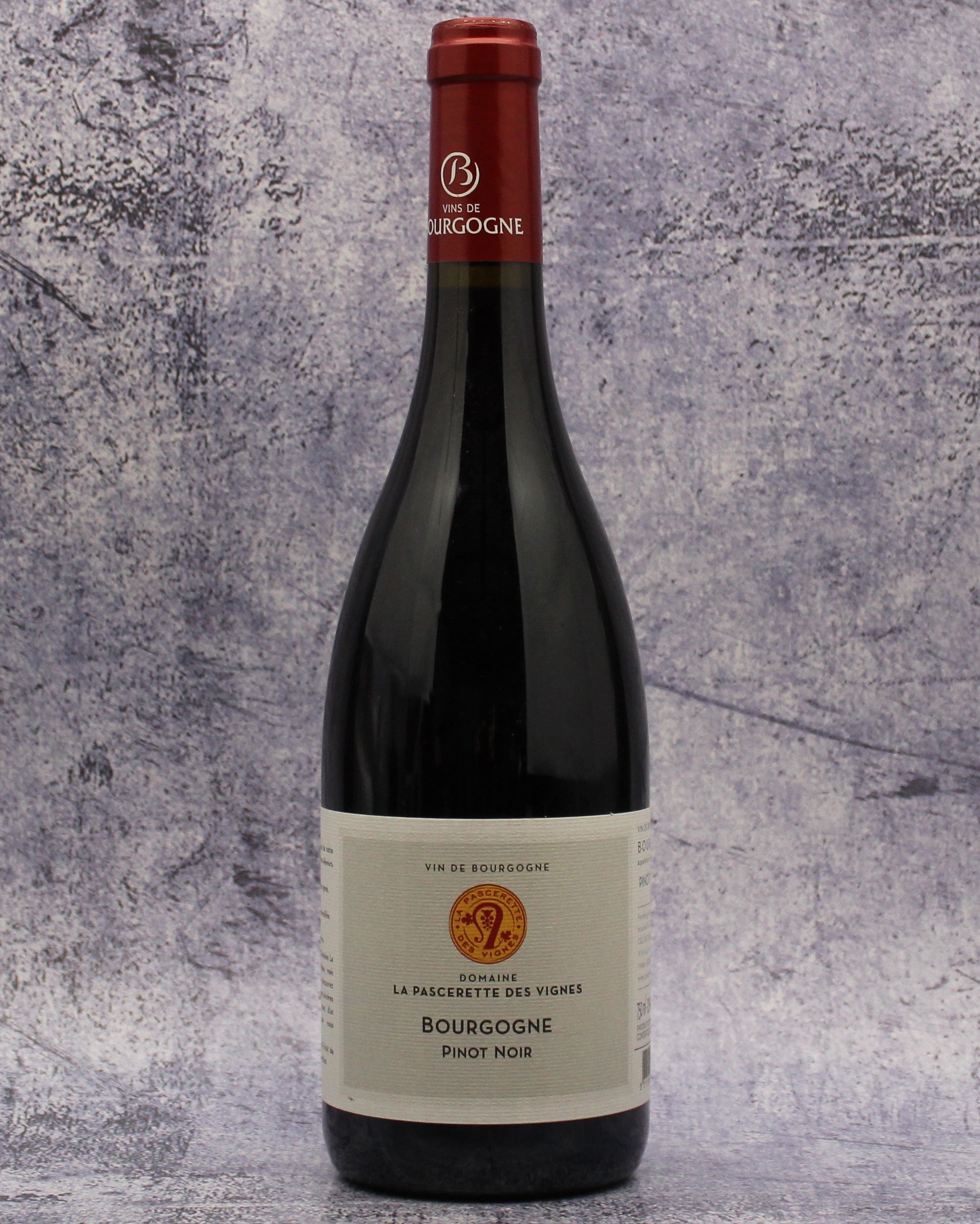Description
From: Mâcon, Burgundy, France
Varietal: Pinot Noir
Taste: Aromas of fresh raspberry, wild strawberry, pomegranate, and sour cherry jump from the glass against a backdrop of forest floor and spice. This is a vibrant, well-rounded Bourgogne Rouge from a producer that favors minerality, red fruit, and finesse. The palate brings a fine-grained texture, a hint of floral lift, and a refreshing minerality that begins in the mid-palate and persists on the finish. The vintage adds depth of fruit and spice, but you’ll be happy to note that the fruit quality is as consistent as the 2021 vintage; 2022 adds more dimension of flavor and spice.
Pairing: The usual suspects will win with this gorgeous red and those like it. Coq au Vin, poulet roti served with roasted fingerling pots and caramelized shallots with sautéed mushrooms, charcuterie & fromage boards, jambon et beurre baguettes or pâté baguettes, anything centered around mushrooms as a main feature, pasta with sausage, sage, squash, and brown butter, porcini risotto, and dishes centered around butternut squash like butternut squash and cheese galette, a savory butternut squash pie, a roasted grape and butternut squash bruschetta (check it out below), or butternut squash polenta with sausage and onion.
Roasted Grape and Butternut Squash Bruschetta
By Kim Severson
About. The Mâconnais is the soul of southern Bourgogne. It extends over 40 km (almost 25 miles) of the Côte Chalonnaise as far as the Rock of Solutré. Lying between the rivers Saône and Grosne, its valleys and hillsides seem to make the vines welcome. Indeed, vines have been grown here since Gallo-Roman times, and their cultivation received a boost from the powerful Abbeys of Cluny and Tournus. The town of Mâcon has strong links with the wine industry. The surrounding villages have a smiling and good-natured appearance, reminiscent of watercolor paintings, with their galleried houses and Romanesque church towers. The wines of the Mâcon appellation, which was established in 1937, can be made from Chardonnay (like this one), Pinot Noir, or Gamay.
The inclusion of “Milly-Lamartine” on this wine’s label indicates that it must come from within a defined area in the villages of Berzé-la-Ville, Berzé-le-Chatel, Milly-Lamartine, and Sologny. Located west of the longest limestone range (stretching from Tournus in the north to Fuissé in the south), the vineyards of Milly-Lamartine are found on the last western slopes of the Mâconnais. Sitting between 287 and 380 meters above sea level on slopes that face the rising sun, the vines are influenced by cool breezes from the first hills of the Haut-Mâconnais. Vineyards span a diversity of soil types (limestone, clay, marl), and exposure ranges from the northeast, where it is cooler, to the southwest, where the vines are more exposed to the sun. Sologny, where Pascerette des Vignes is based, has some Trias clay soils dating back 230 million years.
Founded in 2013, Domaine la Pascerette des Vignes is the project of a lifetime of Celine Robertgeot-Cienki. Originally an engineer from the Marne (in Champagne), Celine settled in the Mâcon (her partner’s hometown) in 1996. The couple had done some consulting work in the agricultural sector, and when they purchased the family home in the town of Sologny, the idea of creating a small farm came up. They found an old farmhouse on the heights of Val Lamartinien and started purchasing sheep. They opened a bed and breakfast on their property in 1999, and their project evolved to include a wine estate when they bought more land in 2012. Celine’s husband joined her work in the vineyards in 2019, and today, they manage 6.8 hectares of vineyards, 16 hectares of meadows, 60 sheep (also used in the vineyards), and a gîte (bed and breakfast).
Their vineyards (which include Chardonnay, Pinot Noir, and Gamay) are planted amongst pastures and forests at around 300 meters above sea level with East and South-East exposures. The estate's name, “Pascerette,” highlights the dual activities; it means shepherdess and also designates the cajole, a shelter for the vineyard workers.
Minimal intervention is the philosophy in the cellar, and farming practices to make genuine and authentic wines grown in a preserved environment. The wines are all organic certified and hand-harvested.

